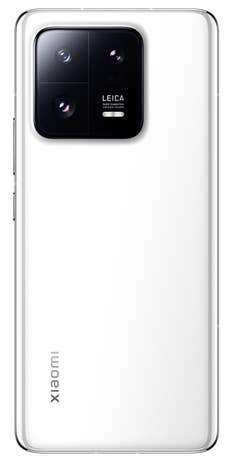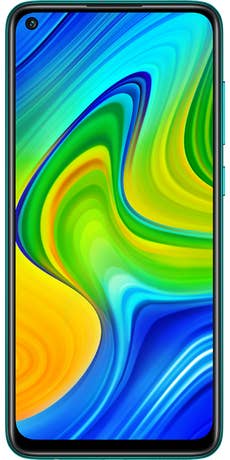Xiaomi 13 Pro vs Xiaomi Redmi Note 9 Vergleich
- Daten
- Preise
Unterschiede hervorheben
Allgemein |
||
| Hersteller | Xiaomi | Xiaomi |
| Modell | 13 Pro | Redmi Note 9 |
| Varianten |
13 Pro (12/256 GB)
|
Redmi Note 9 (3/64 GB)
Redmi Note 9 (4/128 GB) |
| alternative Modellbezeichnung | 13 Pro 5G | |
| Verfügbar | ✓ | ✓ |
| Marktstart in Deutschland | 2023 | Mai 2020 |
| Einführungspreis | 1.300 € |
Redmi Note 9 (3/64 GB): 200 € Redmi Note 9 (4/128 GB): 230 € |
| Aktueller UVP | 1.300 € |
Redmi Note 9 (3/64 GB): 180 € Redmi Note 9 (4/128 GB): 200 € |
| Onlinepreis |
|
|
| Betriebssystem | ||
| Betriebssystem (OS) | Android Version: 13 | Android Version: 10 |
| Benutzeroberfläche (UI) | MIUI 14 | MIUI 11 |
Testergebnisse |
||
| Test auf inside digital | Testbericht | Es ist leider kein Testbericht vorhanden |
Display |
||
| Display Größe | ||
| Pixeldichte | 521 ppi | 395 ppi |
| Auflösung B x H | 1.440 x 3.200 Pixel | 1.080 x 2.340 Pixel |
| Diagonale Zoll | 6,73 Zoll | 6,53 Zoll |
| Diagonale mm | 170,9 mm | 165,9 mm |
| Typ | LTPO | IPS |
| Bildwiederholfrequenz | 1-120 Hz | 60 Hz |
| Material | Gorilla Glas Victus | Gorilla-Glas 5 |
| Display-Format | 20:9 | 19.5:9 |
Gehäuse |
||
| Gehäusematerial | Aluminium, Kunststoff, Keramik | Kunststoff |
| Gehäuse-Format | ||
| Höhe x Breite x Tiefe | 162,9 x 74,6 x 8,38 mm | 162,3 x 77,2 x 8,9 mm |
| Schutzart | IP68 | |
| Schutz gegen | Untertauchen | Spritzwasser (Regen) |
| Gewicht | 229 g | 199 g |
| Farben | Schwarz, Weiß, Blau, Grün | Weiß, Grau, Grün, Blau |
Hardware |
||
| Prozessor | ||
| Prozessor / CPU | Qualcomm Snapdragon 8 Gen 2 | MediaTeK Helio G85 |
| Arbeitsspeicher (RAM) | 12 GB |
3 GB 4 GB |
| Akku | ||
| Akku Kapazität | 4.820 mAh | 5.020 mAh |
| Ladegeschwindigkeit | 120W | 18W |
| Induktives Laden | ✓ | ✗ |
| Speicher | ||
| interner Speicher Größe | 256 GB |
64 GB 128 GB |
| SD-Kartenslot | ✗ | ✓ max. 512 GB |
| Arten | - | microSD |
| SIM-Kartenslot | Nano-SIM und eSIM | Nano-SIM |
| Mehrfach SIM | ✓ Dual-SIM | ✓ Dual-SIM |
| Einschränkung: Hybrid-Fach | Nein | Nein |
| Sensoren | Fingerabdrucksensor, Face-Unlock | Fingerabdrucksensor |
| Tasten | ||
| Hardware-Tastatur | ✗ | ✗ |
Konnektivität |
||
| LTE (4G) | ✓ | ✓ |
| 5G | ✓ | ✗ |
| WLAN | ✓ | ✓ |
| Standard |
IEEE 802.11a IEEE 802.11b IEEE 802.11g IEEE 802.11n IEEE 802.11ac IEEE 802.11ax IEEE 802.11be |
IEEE 802.11a IEEE 802.11b IEEE 802.11g IEEE 802.11n IEEE 802.11ac |
| Band | 2.4 GHz, 5 GHz, 6 GHz | 2.4 GHz, 5 GHz |
Anschlüsse & Übertragung |
||
| USB | ||
| USB-Port | ✓ | ✓ |
| Typ | 2.0 Typ C | 2.0 Typ C |
| Lightning-Connector | ✗ | ✗ |
| Bluetooth | 5.3 | 5.0 |
| Audio-/ Kopfhörerbuchse | … | 3.5 mm |
| NFC | ✓ | ✓ |
| Radio | ✗ | ✗ |
Kamera |
||
| Rückseitige Kamera | Leica Profi-Objektiv | Hauptkamera |
| Kameraauflösung | 8688x5792 (50,3 Megapixel) | 8000x6000 (48,0 Megapixel) |
| Sensor | IMX989 LEICA VARIO-SUMMICRON 1:1.9-2.2/14-75 ASPH | |
| Blende | f/1.9 | f/1.79 |
| Bildstabilisator | ✓ Variante: optisch | ✗ |
| Digitaler Zoom | … | … |
| Optischer Zoom | ✓ 3,2 - fach | ✗ |
| Videoauflösung | 7680x4320 (33,2 Megapixel) | 1920x1080 (2,1 Megapixel) |
| Aufnahmegeschwindigkeit | 24 fps | 30 fps |
| Blitz / Fotoleuchte | ✓ | ✓ |
| Rückseitige Kamera 2 | Teleobjektiv | Ultraweitwinkelkamera |
| Kameraauflösung 2 | 8688x5792 (50,3 Megapixel) | 3264x2448 (8,0 Megapixel) |
| Kamerablende 2 | f/2.0 | f/2.2 |
| Rückseitige Kamera 3 | Ultraweitwinkelkamera | Makrokamera |
| Kameraauflösung 3 | 8688x5792 (50,3 Megapixel) | 1600x1200 (1,9 Megapixel) |
| Kamerablende 3 | f/2.2 | f/2.4 |
| Rückseitige Kamera 4 | Tiefensensor | |
| Kameraauflösung 4 | 1600x1200 (1,9 Megapixel) | |
| Kamerablende 4 | f/2.4 | |
| Testbilder |
Es sind leider keine Testbilder vorhanden.
|
Es sind leider keine Testbilder vorhanden.
|
Frontkamera |
||
| Fronthauptkamera | Selfie-Kamera | Selfie-Kamera |
| Frontkamera | ✓ | ✓ |
| Auflösung | 8000x4000 (32,0 Megapixel) | 4160x3120 (13,0 Megapixel) |
| Videoauflösung | 1920x1080 (2,1 Megapixel) | 1920x1080 (2,1 Megapixel) |
Sonstiges |
||
| Besonderheiten |
Premium-Flaggschiff MIUI 14 Bildwiederholrate: dynamisch 1–120 Hz 6,73-Zoll-Double-Curved-Display IP68-Schutz HyperOIS 1920 Hz PWM-Dimmung 120W Ladegeschwindigkeit, 50W kabellos XiaoAi AI Assistant 6.0 Nano-SIM und eSIM |
… |
| Lieferumfang | 120-Watt-Ladegerät, USB-Typ-C-Kabel, Steckplatzwerkzeug, Schutzhülle, Kurzanleitung, Garantiekarte. | Netzadapter, Einfache Schutzabdeckung, USB-Typ-C-Kabel, Steckplatzwerkzeug, Benutzerhandbuch, Garantiekarte. |
Was unsere Symbole bedeuten …
- ✓ Ja/Vorhanden
- ✗ Nein/Nicht vorhanden
- … Bislang unbekannt/Wird ergänzt
Wir recherchieren gründlich, um dir die vollständigsten und genauesten technischen Daten zu liefern. Kontaktiere uns, wenn du etwas zu ergänzen hast.




